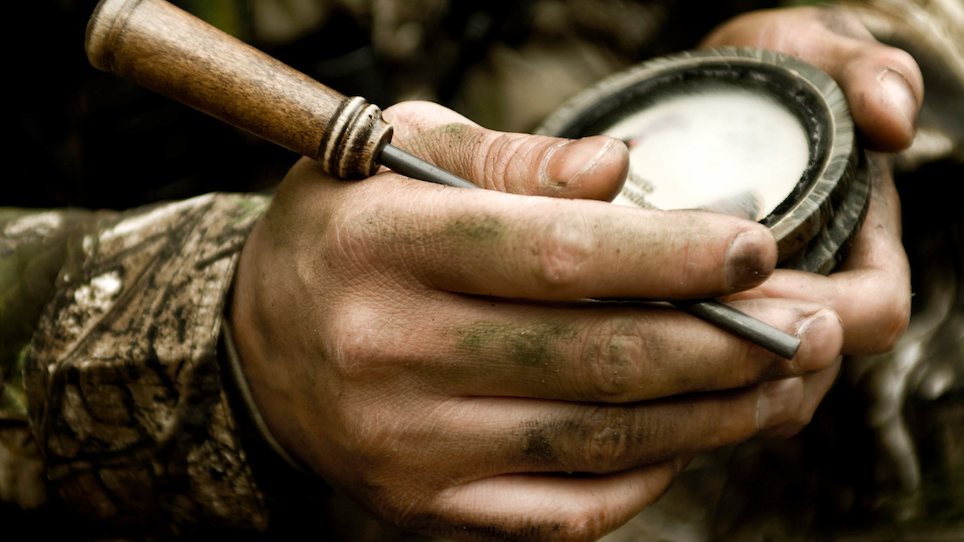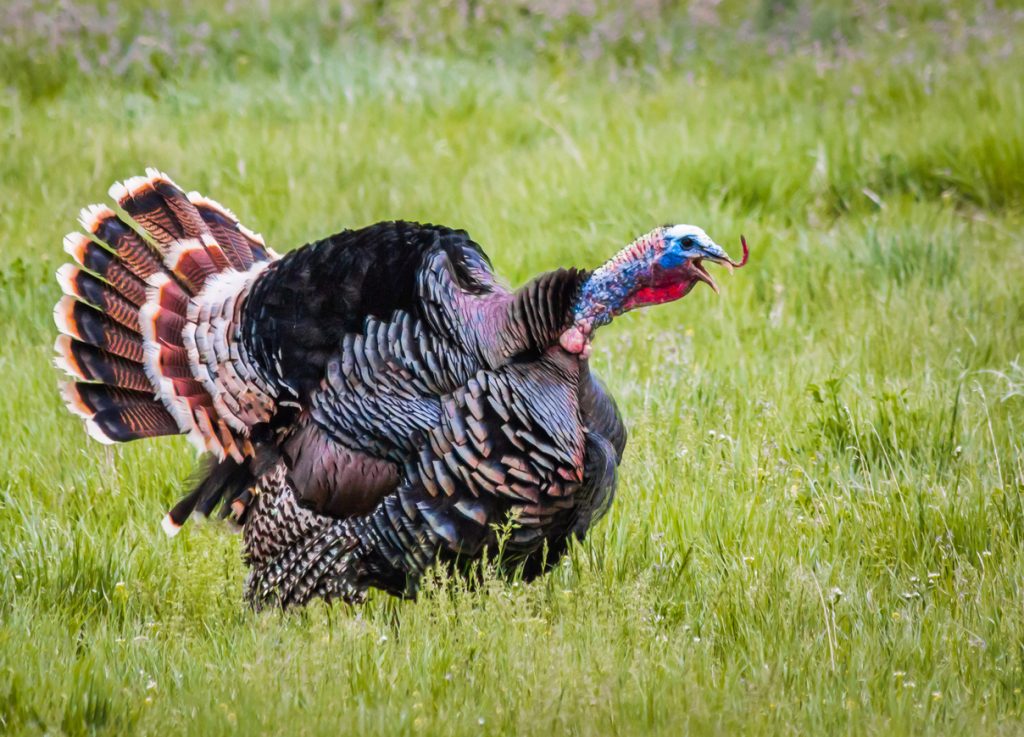One thing I learned early on in my turkey tenure is the more I understood what the birds were saying, the more often I got to sling a turkey over my shoulder. Here’s a crash course in the lingo and what turkey sounds mean.
Tree Gobble
Both toms and jakes will, depending on the weather, hammer away on the roost. Use these gobbles to 1.) locate male birds on the roost if the roost trees are visible and 2.) gauge how far away the birds are if you can’t see the roost trees.
Tree Yelp
A series of soft, muffled yelps sputtered by a roosted hen. I listen for this call in the morning as it lets me know if there are girls roosted with or in close proximity to the boys. If I don’t hear tree yelps, I will send out a few of my own to let the roosted tom or toms know where I’m at. Note: Just before fly-down, the yelping often increases in volume and will transition to a fly-down cackle, which is a series of high-pitched, irregularly spaced notes. I rarely use a fly-down cackle call unless I know the tom or toms I’m calling to are on the ground. I’ve used this call on roosted toms in the past, and it seems it keeps their toes curled around a tree branch waiting for the hen to come to them before they makes their descent.
Plain Yelp
One of my favorite calls is a single yelp. Yep, just one. Of course, depending on the situation, I will let out a series of single note yelps, but I don’t get overly excited with them. A yelp is basic turkey language; it’s a note that must be mastered. If you can yelp, you can call in a longbeard. This call is often used by hens to communicate with the flock and, during mating season, a gobbler.
Cluck & Purr
This is my deal-closer. Turkeys cluck and purr when they are relaxed, feeding or generally just feeling generally content. This is not a loud call, but rather simple flock talk I use when blind calling and when a tom is getting close. I also use the cluck and purr to convince a hung-up tom to commit to the decoys.
Excited Yelp/Cut
This call can make or break a setup. This is a series of standard yelps run with a more excited, rapid tempo. I never use this call if I have a turkey coming in my direction unless he is red-hot and gobbling his head off. In nature, the call is used by a hen to let other birds know she is worked up about something. Often, the call is made by a dominant hen with a gobbler. If you can pick a fight with her, she may lead that big old tom right to you. If I can irritate the hen, I will also cut hard and sharp on the call between a series of yelps.
Cutting is a sign of excitement and can further lure in a hen with a gobbler in tow, especially if you can mimic her excited yelps while cutting her off at the same time. I will also cut and get excited when I have two or more toms approaching the decoys slowly. I do this when they are at a distance, never up close. If used correctly, it can cause the more dominant tom in the group to break and run toward your decoys.
Fighting Purr
I use this call a lot when trying to get a hung-up lone gobbler or one with a hen bowhunting-close. The fighting purr is a series of louder-than-usual purr runs that increase in volume and intensity with each series. Battling hens will make this call when agitated with each other, and it really seems to appeal to hung-up longbeards.
Kee-Kee Run
This is, normally, a fall call used by lost young turkeys to locate the flock. Variations of the call are also used by adult birds and can be made by both male and female birds, making it a great natural-sounding call in the spring woods. I use this call often when hunting highly pressured birds.
Of course, nothing trumps being able to actually hear these sounds. My advice: Spend the next few weeks listening to World Champion and Grand National Calling Champions Matt Van Cise and Billy Yargus. Visit www.youtube.com/watch?v=GrDwVhhOmH4, and listen to all of the above-mentioned sounds and how to make them. Noted turkey authority Chris Parrish also puts on a good demonstration at www.youtube.com/watch?v=RSgVfamv_Eo.
Lastly, and this is my biggest piece of advice: Listen to live birds when you hunt! Nothing will increase your turkey call fluency faster than listening to live birds. Listen to how they communicate with one another and how they respond to the calls being made. A great time to do this is while you scout and spending time in the woods first thing in the morning and last thing in the evening when birds tend to be the most vocal.
Featured Photo: John Hafner







